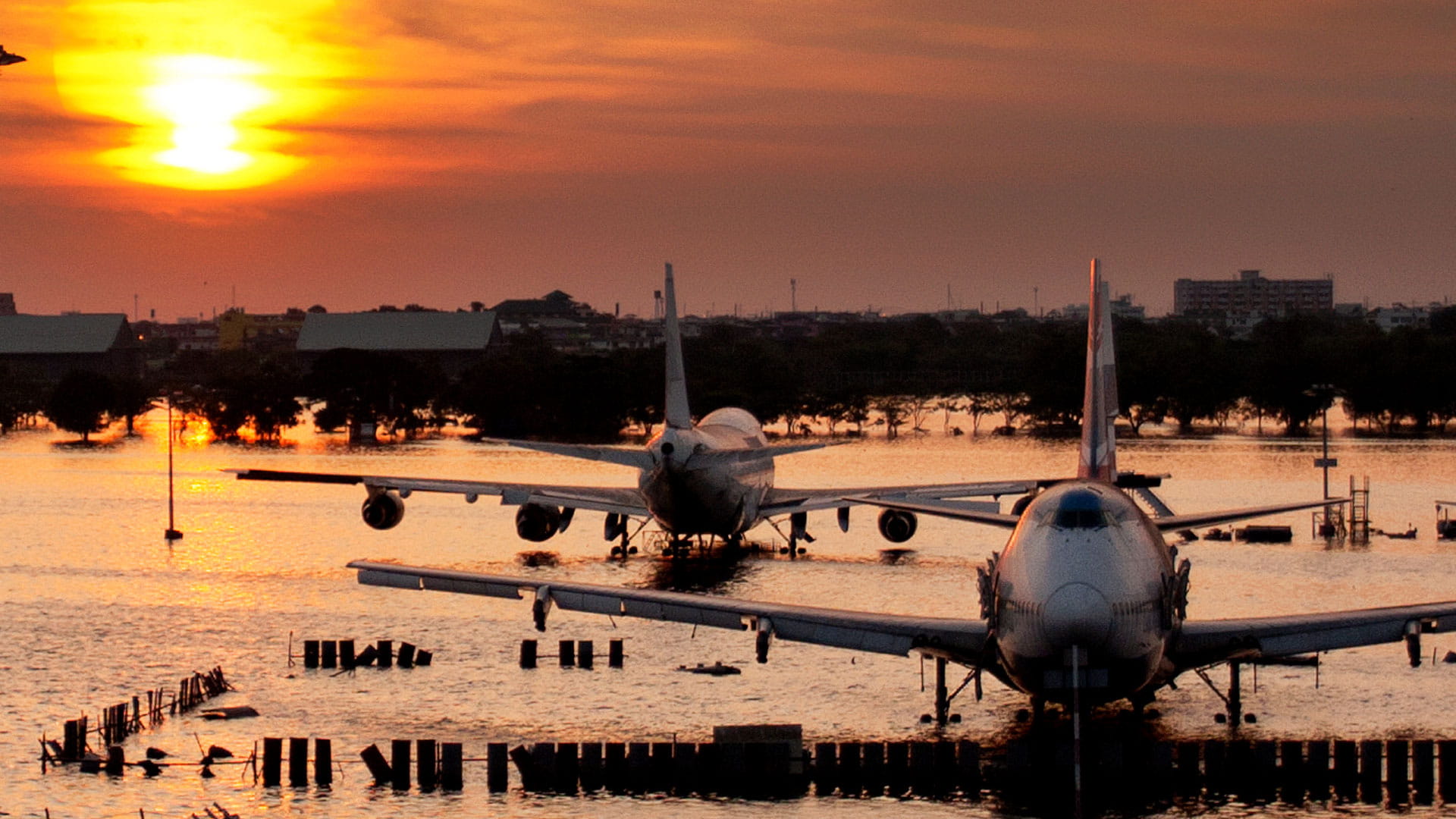Improving airport climate resilience - what is the best approach?
Airports are becoming increasingly vital hubs for trade and cargo – as well as economic and transport gateways to developing and developed countries around the world. But they are under threat from climate change, with events increasing and their impacts becoming harder to predict and avoid.

We sat down with Vivekanandhan Sindhamani, Leading professional in Sustainable Aviation at NACO, to discuss the importance of climate resilience to futureproof airport operations and infrastructure:
Why is it important for airports to increase climate resilience?
Climate resilience is important because it impacts every other aspect of airport operations. The frequency and intensity of the extreme weather events are expected to increase and with this the flight delays, cancellations, and inconvenience to passengers and staff increase as well. This translates to the loss of both aero and non-aero revenues for airports. The results of the latest IPCC reports show the severity and increasing rate of climate change.One of our recent projects in Kansai, Japan showcased just what can happen when the airport was impacted by an extreme event. The project shows what it requires to recover and be climate resilient in the future.
All of this may seem obvious, but airports have a long list of priorities. Their day-to-day operations require seamless cooperation and coordination with third parties such as airlines, ground handlers, cargo forwarders, and more to move hundreds of thousands of passengers around the world.
That means their attention is divided – and when climate resilience is a blind spot for many in the sector – it can slip down the priorities list, despite its importance and relevance at the early-stage adoption. For instance, upfront climate resilience investment is practically more cost-effective compared to investing to rebuild or repair the damage.
What is the best approach to ensure airport climate resilience?
The best approach is to embed climate adaptation design requirements per relevant climate stressors into your airport strategy, master plan, investment plan, and policies from the ground up - establishing a climate resilience working group to ensure it is reassessed every three to five years. By doing this, climate resilience becomes part of the airport’s business continuity plan, with infrastructural updates, design processes, programs, and guidelines updated accordingly.As mentioned, the attention of airports is understandably divided – and that’s why for most airports, the best approach is going to be consulting with the experts, who can do the work to assess your baseline position and provide an adaptation pathway towards a more climate-resilient future for your airport.
The right expert can bridge the gap between strategic outlook and implementation, who can advise on senior management decisions to cover the business risk for climate adaptation – and this is something we are proud of at NACO, as a company of Royal HaskoningDHV. As experts in the field of aviation sustainability and climate resilience, we’ve seen how different measures work for different airports around the world. We understand the practices and methods available, and we collaborate with clients to bring the right solutions to the table that meet their unique needs.
What steps should airports take to increase the climate resilience of their infrastructure and operations?
Each airport has a different journey, so your strategy should be shaped toward the individual strengths and weaknesses of your airport. However, there are a handful of key steps that are likely to be valuable for every kind of airport:
- Setting benchmarks – A good place to start is looking into similar airports – in terms of size but also climate challenges – and understanding how your airport is doing in comparison.
- Identifying climate factors – Find out what climate factors are most relevant to your airport and categorise them into acute physical risks – a sudden-onset disaster event like cyclones and tsunamis, and chronic physical risks – slow-onset disaster caused by long-term environmental degradation. If relevant you should also take the transition risks into account. These are risks related to transitioning to a lower-carbon economy through policy, legal, technology, and market changes.
- Identifying the critical assets and operations – Look at the setup of your airport portfolio – what are your critical assets and how are their operations set up? Critical assets are the ones whose failure will directly inhibit airport operations.
- Understanding the impacts – Once critical assets are identified, understanding the level of impact e.g. recovery time – including cascade effects – is key to prioritising the next steps and investment.
- Building a pathway – Finally, defining the adaptation measures and a corresponding roadmap that an airport can follow on. What’s first, what’s second? An investment plan for achieving climate-resilient infrastructure and operations.
What is the future of climate resilience and how can airports prepare for it?
The short answer is that airports should be looking to act and invest now. While climate resilience is a strategy with a long-term outlook – the need for it is already upon us and there are actions that can be taken today that will make a difference down the line.Ultimately, it’s about mitigation, adaptation, and resilience. Airports that fail to act on these three things will be facing a risk on business continuity and loss opportunities that may come.
In terms of the tools available to facilitate climate resilience implementation, the future is exciting! We are seeing digital solutions becoming embedded in the processes to increase resilience – from measurement to risk assessment simulations. As systems become more automated, the climate data they acquire will be stored in digital tools – making it easy to access and increase the accuracy of predictions.
These tools and data are to be seen as enablers of human dialogue. They increase understanding amongst stakeholders to facilitate better engagement – while enhancing the transparency of the decision-making process to cut through complexity.
